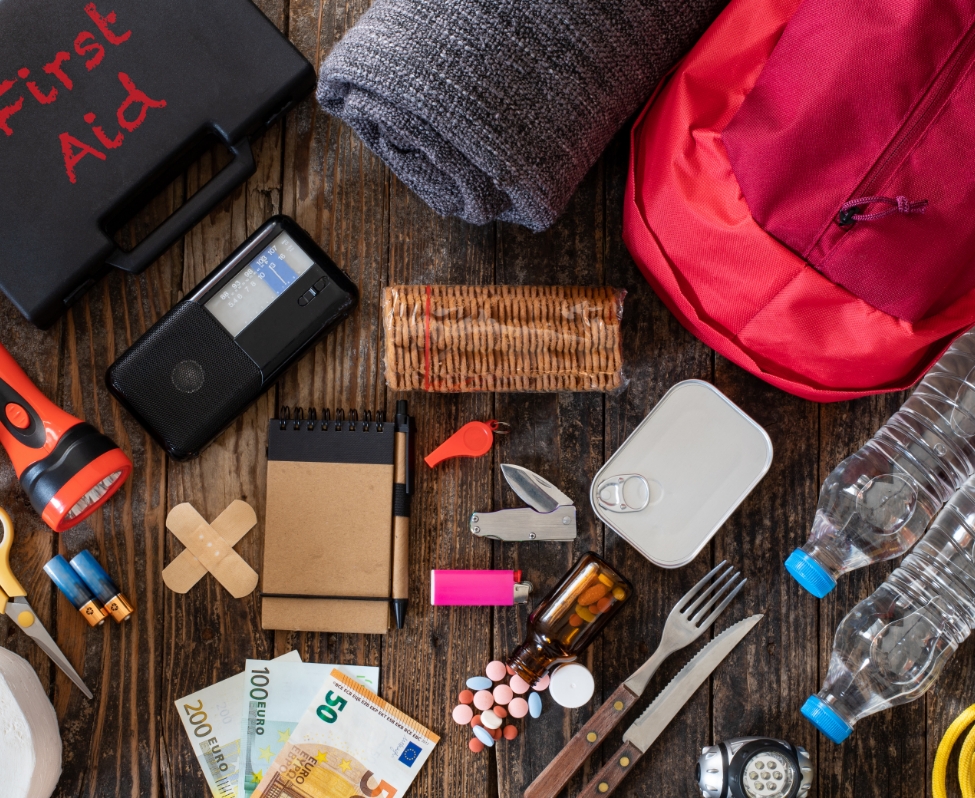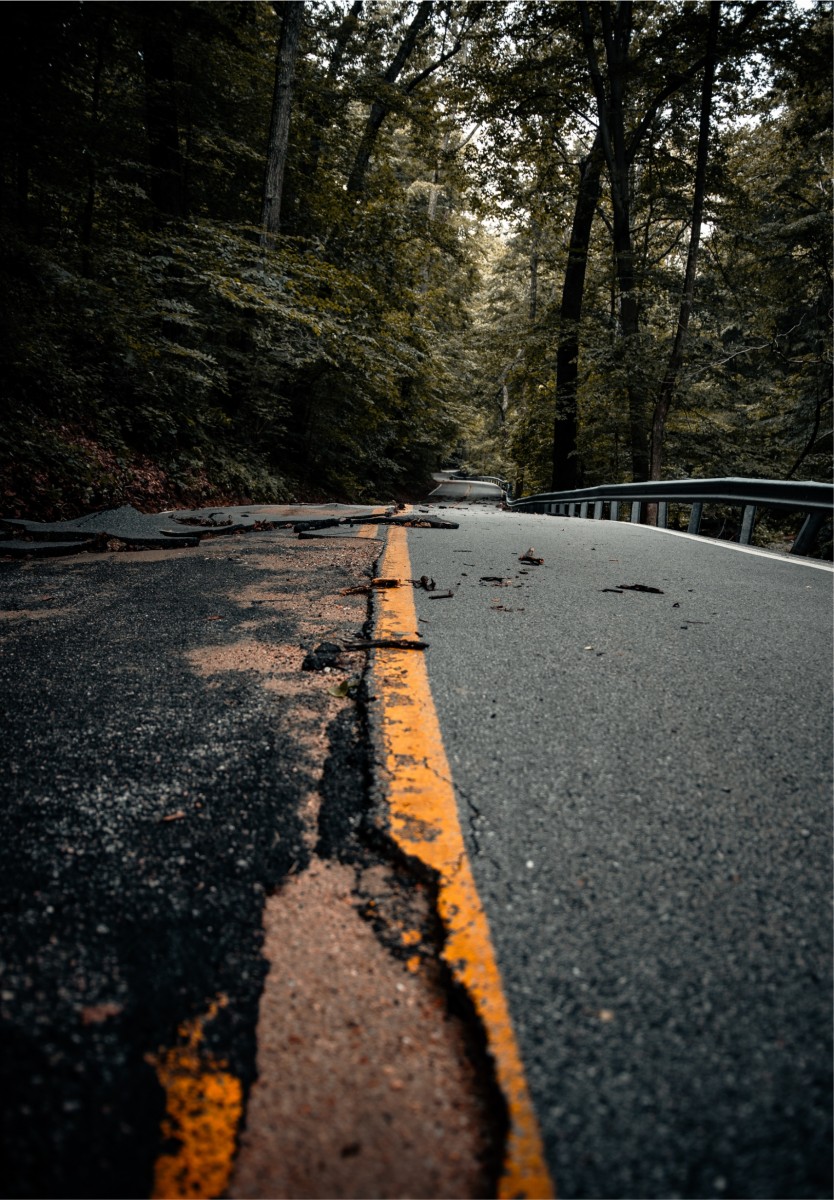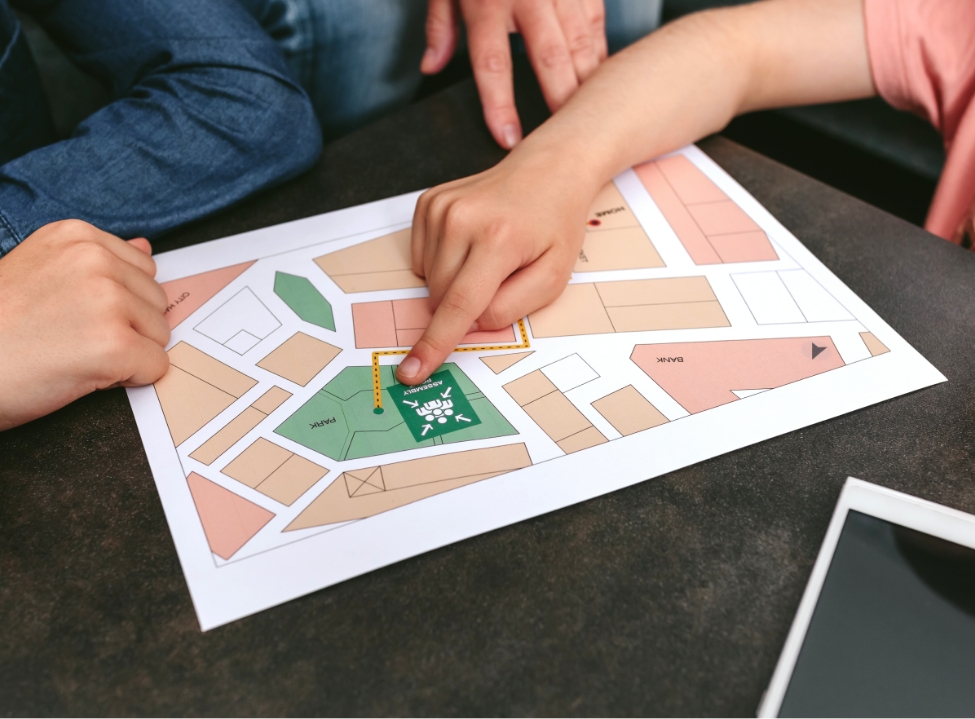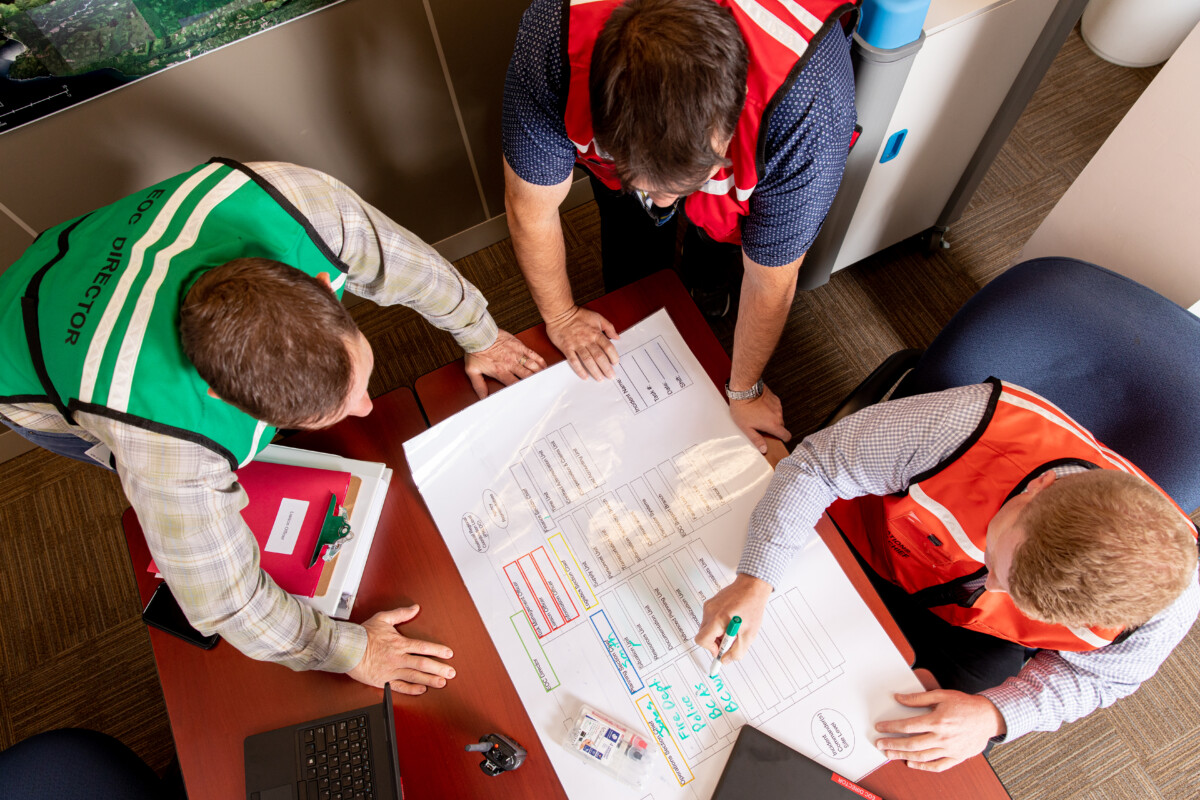
Identify the hazards in your area. Understand the risks that you may face. Visit our hazard map to find out more about the hazards in the Cowichan area.

In the event of a significant emergency, you may be cut off from services or need to leave home quickly. Take time now to put aside some emergency supplies and also build an emergency grab-and-go bag for each member of your household. Start with the basic list below. Also consider the additional needs of your household: Do you have pets? Do you have young children? Are you caring for seniors or people with disabilities? Customize your supplies to support your family’s needs for at least ONE WEEK.

- First Aid kit, prescriptions
- Water – 25-30 litres per person (4 litres per day per person)
- Non-perishable food, ready to eat for one week
- Battery Powered/ Hand Crank Radio
- Battery Powered/ Hand Crank Flashlight
- Phone charger and battery bank
- Whistle to signal for help
- Emergency plan, copies of essential documents
- Cash
- Garbage Bags, Moist towelettes
- Blankets, seasonal clothing and footwear
- Water
- Ready to eat food
- Phone Charger and battery bank
- Hand crank or battery-powered radio
- Small first aid kit/personal medications
- Personal toiletries/items (e.g. baby diapers, glasses)
- Copy of emergency plan, essential documents (e.g. insurance)
- Cash in small bills
- Seasonal clothing / emergency blanket
- Pen and note pad
- Whistle
- Pet leashes if applicable
Knowing what to do will help keep you calm and safe. Make a plan for your household which includes how you’ll communicate, where you’ll meet up if you are separated, and critical pieces of information about your (medications, special needs).
For more help, download a home emergency plan template and fill it out. For more information, see the full Home Emergency Preparedness Guide.

- Combining, coordinating, and prioritizing emergency response resources
- Providing current information to the public
- Managing and mitigating risks
- Coordinating damage assessment
- Directing critical infrastructure repair
- Supporting evacuees
- Leading community re-entry
- Coordinating initial recovery efforts

